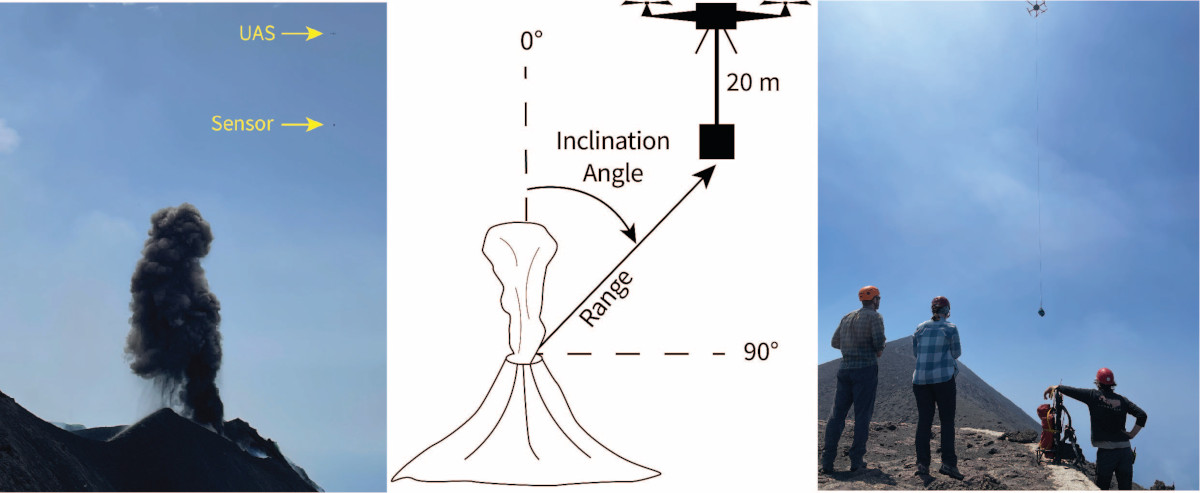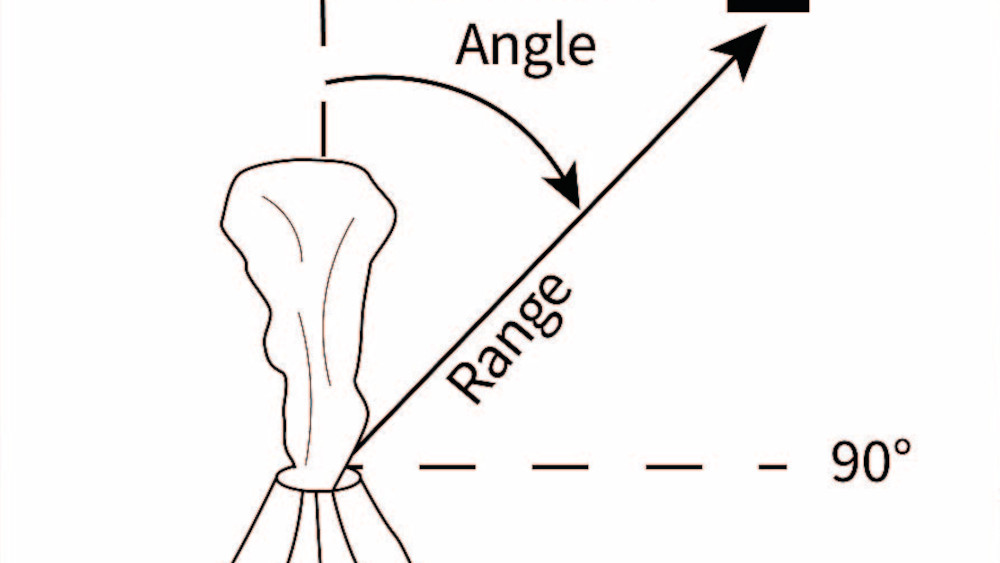
USGS: “Image of jetting eruption at Stromboli volcano Italy (left), the orientation of the sensor compared to the eruption direction (center) and a close image of the hovering UAS with sensor on tether below (right-Image courtesy David Fee). “
(BIVN) – From this week’s Volcano Watch article, written by U.S. Geological Survey Hawaiian Volcano Observatory scientists and affiliates:
Volcanic eruptive activity may take many forms, from gently erupting basaltic fissures in Hawaii to intense explosive eruptions like those of Mount St. Helens. Volcano observatory scientists are keenly interested in understanding such events and their implications for hazards. Two types of eruptions have been the focus of recent studies at Stromboli in Italy.
Volcano observatories often use continuous remote monitoring instruments like seismometers and acoustic microphones to detect earthquakes and explosions. These types of sensors are ideal because they can monitor constantly, and scientists can apply remote detection capabilities, not unlike home alarm systems in households and businesses, to monitor activity.
To build more accurate alarms, volcano scientists work to better understand key eruption characteristics of volcanic eruptions.
In a recent study, USGS volcano observatory researchers joined international volcano scientists to examine two types of eruptive activity at Stromboli volcano, which erupts frequently.
The scientists were interested in discovering differences between discrete explosive eruptions compared to sustained eruptions (called jet eruptions for their similarity to a jet engine on a plane). The two eruption types have different implications for hazardous conditions at Stromboli. The motivation of the study is a better understanding of these events, at Stromboli, that can be applied to similar types of volcanic activity occurring around the globe.
Explosive eruptions are characterized by their impulsive onset and tend to radiate energy equally in all directions. These types of eruptions may throw rocks in all directions. At Stromboli, sustained jets have longer durations and produce a directed plume of ash and rocks away from the vent. The events are analogous to jet engine dynamics and such volcanic jetting can push ash to heights beyond international airline traffic altitudes.
From a volcano monitoring perspective, it is useful to understand the types of signatures that these events produce and how they are recorded on standard volcano monitoring networks. However, networks are hindered because seismic and acoustic sensors are almost always placed on the ground surface and are not ideal for the capture of eruption energetics into the atmosphere.
The research team working in Italy attempted to improve our understanding of eruption dynamics by placing an acoustic senor on a small stationary Uncrewed Aircraft System (UAS, or drone) helicopter above Stromboli to capture both explosions and jet eruptions. The work revealed key features of the two event types that allow them to be easily distinguished by a sensor briefly suspended above the volcano.
This particular experiment in Italy is impractical from the perspective of long-term eruption monitoring. However, it demonstrated the ability to capture these data and identified constraints on how to design better ground networks to monitor the wide variety of eruption types. This work introduces methods for improved monitoring and detection of volcanic eruptions at United States and international volcanoes, which in turn improves situational awareness and volcanic response.
The Hawaiian Volcano Observatory currently uses UAS techniques to measure volcanic gas and conduct aerial imagery surveys to generate three-dimensional models. Experiments by other volcano scientists show that applications of UAS technology are continuing to develop and expand. If you want to learn more about experiments of this type, please check out this recent publication in Geophysical Research Letters (2023).


by Big Island Video News7:57 am
on at
STORY SUMMARY
HAWAIʻI - Two types of eruptions have been the focus of recent studies at Stromboli in Italy, scientists write in this week's article.